MISCHIEVOUS BOYS, IRVING SQUARE (1931)
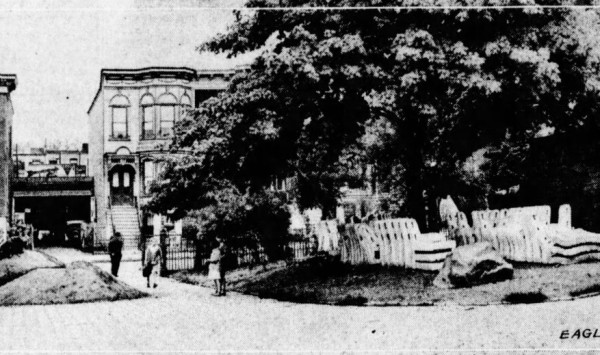
******************************************************************************************************************************** Brownstone Detectives investigates the history of our clients’ homes. The story you are about to read was composed from research conducted in the course of one of those investigations. Do you know the history of YOUR house? ******************************************************************************************************************************** There isn’t much little boy mischief that a Bushwick alderman, a beat cop, and a parks department official can’t handle. And all three were necessary to combat the troublesome striplings that were desecrating Irving Square Park during a renovation in 1931. “There’s not a shrub or a plant missing.” So explained Thomas J. Larney, park keeper for Irving Square Park in Bushwick, in his lilted Irish brogue. “The gardener counts up every week and there’s nothing missing. And there are plenty of seats for people to sit down on.” Larney was responding to public criticisms of a project in the park that was supposed to have ended long ago. Construction equipment, concrete park bench forms, bunches of plants and shrubbery, and piles of dirt, though, still obstructed residents’ enjoyment of the public space. He apparently saw the little mischief-makers, though, as no concern to the project, not even mentioning their after-dark activities. The bigger picture, of course, was just a bit more complicated. A series of unavoidable delays was keeping the contractor from finishing his work. These delays were causing conditions in the park which gave the local residents grief. And the continuation of these conditions presented targets of opportunity for the local miniature scalawags, who would “knock over some of […]
THE “OLD LADY OF HALSEY STREET” (1935)
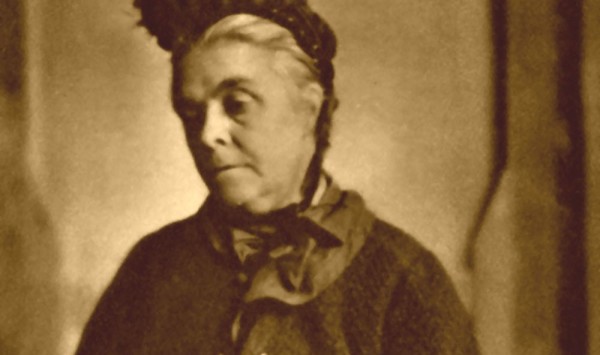
******************************************************************************************************************************** Brownstone Detectives investigates the history of our clients’ homes. The story you are about to read was composed from research conducted in the course of one of those investigations. Do you know the history of YOUR house? ******************************************************************************************************************************** It’s the type of story that modern-day house-hunters dream of – a brownstone that, since it was built, has been occupied by the same elderly lady who rarely left the house and never “modernized” it. The gas fittings were original. The details were untouched. Even the furniture was from the 19th century. Its nickname was the “Treasure House,” and it was owned by the “Old Lady of Halsey Street.” THE LIFE AND DEATH OF MARY V. WELSH When Mary V. Welsh died in April of 1935, she had been known as the “Old Lady of Halsey St.” She got the name because little was known about her other than the fact that none of her neighbors was old enough or had lived on the block long enough to have remembered her moving into her house at 425 Halsey Street. The neighbors always remembered her simply being there. She dressed in a style of 50 years previous, never spoke to anyone on the street, and had cats – 9 or 10 of them, as far as they were counted. A relic of another time, the neighbors took notice of her only as the anachronism that she was to them – a connection with a time long forgotten. After her body was found, […]
A WILLOW GREW IN BROOKLYN HEIGHTS (1938)
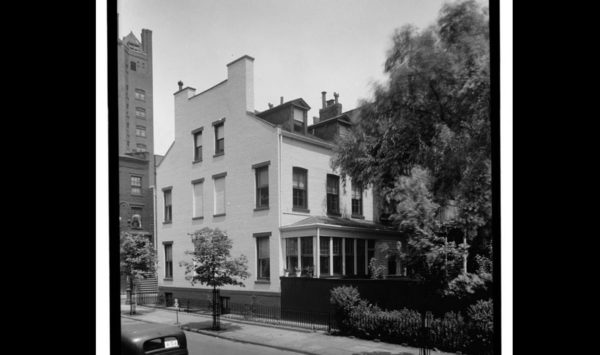
******************************************************************************************************************************** Brownstone Detectives investigates the history of our clients’ homes. The story you are about to read was composed from research conducted in the course of one of those investigations. Do you know the history of YOUR house? ******************************************************************************************************************************** (In September of 1938, one of the deadliest and most destructive tropical cyclones to hit Long Island, New York, “The Long Island Express,” wrecked havoc on the peninsula and much of Brooklyn, as well. In addition to killing 682 people and damaging or destroying more than 57,000 homes (causing property losses of $4.7 billion in today’s dollars), the hurricane knocked down innumerable trees. One of the more famous trees to lose its life in that storm was a willow tree of unknown age which sat in the yard of Brooklyn Heights’s No. 57 Willow Street. Some claimed that it was this tree that gave the street its name.) *********************************************************************************************** From the Brooklyn Daily Eagle, Mon., 31 October 1938 (by columnist Maxwell Hamilton): “At the rate timber fell around us during the Hollywood hurricane last September (ed.’s note-“The Long Island Express” was one of the deadliest and most destructive cyclones to strike Long Island, New York), it would have been a flagrant case of playing favorites to select any one particular crashing tree and honor it with front-page billing. And yet, if the evidence gathered by our secret agents is worth any salt at all, it would appear that we all missed up on one leafy upheaval that was genuine news. We […]
THE DAY BED-STUY WAS BORN (1895)
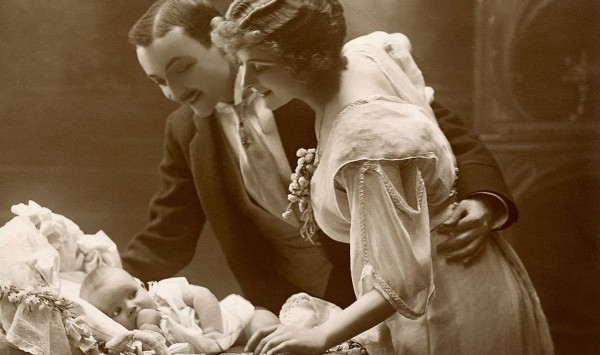
******************************************************************************************************************************** Brownstone Detectives investigates the history of our clients’ homes. The story you are about to read was composed from research conducted in the course of one of those investigations. Do you know the history of YOUR house? ******************************************************************************************************************************** Bedford-Stuyvesant, known coloquially as “Bed-Stuy,” is a section of Brooklyn that conjures as many mental images as there are residents of the district. With a past as colorful and storied as any other section of the borough, its ups and downs, though, seem to have been much more extreme. One only need consider the district’s unofficial slogan for much of the past 30 years, “Bed-Stuy: Do or Die,” to dredge up a very recent period sadly associated with images of guns, drugs, and gang violence. But this more recent history is not the point of this story. We want to go further back to try and understand how Bedford, which was formerly a village built up around the intersection of Bedford Avenue and what would become Fulton Street, joined with the developing neighborhood of Stuyvesant Heights. The official birthdate of Bedford-Stuyvesant has always been a moving target depending on the reference made or its actual source. Any discussion of its original designation would need to consider the fact that the term “Bedford-Stuyvesant” came about colloquially, and so unofficially, at first, but later took on the mantel of authority. WAS BED-STUY BORN IN THE ’30S? The majority of designations have placed Bed-Stuy’s birthday squarely within the 1930s. The New York Times, in […]
“HE CAME TO FIX THE ELECTRIC WIRE” (1938)
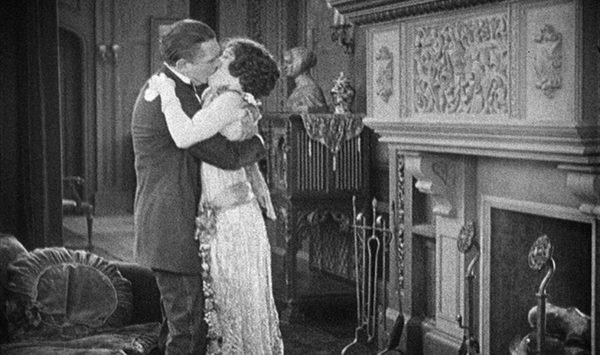
******************************************************************************************************************************** Brownstone Detectives investigates the history of our clients’ homes. The story you are about to read was composed from research conducted in the course of one of those investigations. Do you know the history of YOUR house? ******************************************************************************************************************************** “And if thow take a wyf unto thyn hoold, Ful lightly maystow been a cokewold.” With these words – and others – the Wife of Bath, in Shakespeare’s “Chaucer,” attempted to secure the hand of the knight by frightening him with the possibility of becoming a cuckold, a man whose wife is sexually unfaithful. The word has survived down the ages used in most derisive ways, but mostly as a lesson that men should pay more attention to their wives and take caution, particularly if they are pretty, that they do not “wander.” In 1938, this very tale unfolded for a mechanical engineer, whose wife “employed in a swanky Lexington Ave., Manhattan, hotel,” had the misfortune of being “caught in the act.” THE STORY ABOUT THAT “ELECTRIC WIRE” The whole story started when Thomas Goodfellow’s wife, Mary “Mae” Goodfellow, “a comely brunette,” one day left her husband and visited friends of theirs, Mr. and Mrs. Rafael of No. 628 40th Street. Along with her visit to Manhattan came her story that “she had had some trouble with her husband and asked for shelter.” Mrs. Rafael allowed Mrs. Goodfellow to remain and when the Rafaels left for Central Islip for the summer, “Mrs. Goodfellow was still there.” While Mrs. Goodfellow resides in […]
A BUFFALO SOLDIER ON HERKIMER ST. (1930)
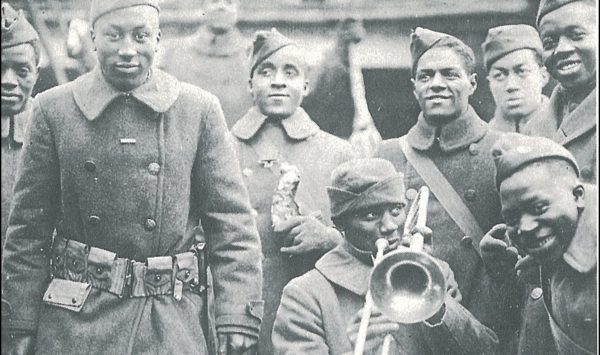
******************************************************************************************************************************** Brownstone Detectives investigates the history of our clients’ homes. The story you are about to read was composed from research conducted in the course of one of those investigations. Do you know the history of YOUR house? ******************************************************************************************************************************** It was 1918, and Harry Francis Cole had only three options. As an African-American in the United States, drafted into the military when the country was entering the First World War, he could: 1) work as a non-combatant – laboring as a stevedore, digging trenches, graves, and latrines, or building hospitals, roads, bridges, and railroad lines, 2) fight in a segregated unit – as an American soldier with the French Army, whose soldiers did not object to fighting alongside African-American troops, or 3) join a military band – one of the many brass bands in the European theater that were composed of African-American musicians. Cole, already a budding musician back home in Philadelphia, would naturally find himself in the last group, a horn player in one of the units of the 92nd Division – or, as the military unit was more commonly known, the venerated “Buffalo Soldiers.” BORN TO WAIL Born one of four children to William and Carrie Cole in Philadelphia in 1896, Harry Cole was never really destined to be a fighter. When he was a boy he was even then sure that his future was in music. He likely caught the bug when ragtime was all the craze, but when he heard the new sound of jazz in the […]
SHAKESPEARE AT NO. 24 BREVOORT PL (1928)
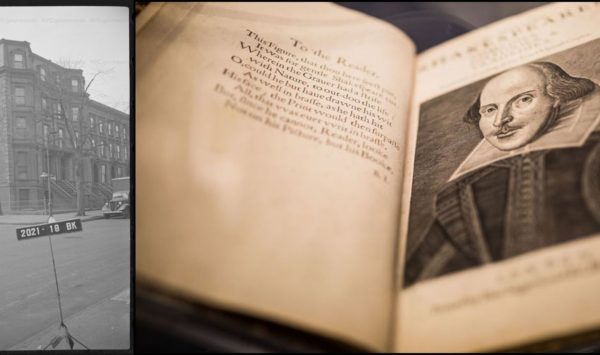
******************************************************************************************************************************** Brownstone Detectives investigates the history of its clients’ homes. The story you are about to read was composed from research conducted in the course of one of those investigations. ******************************************************************************************************************************** Henry C. Folger loved Shakespeare. His admiration for the author and his writings was such that he once paid $100K for a single folio of the bard’s work. The president of the Standard Oil Company was so smitten with Shakespeare’s works that, in 2014, a book, Collecting Shakespeare, was published about Folger and his collection. Folger, who started his relationship with Standard Oil as its director, would rise to become the chairman of its board, building a trusted relationship with the company’s owner, John D. Rockefeller, Sr. While frugal in the management of his money, Folger’s position with the largest oil company in the world certainly allowed him plenty of it to use in the pursuit of everything Shakespeare. And everything Shakespeare that he purchased for his collection eventually made its way to the library of their rented house at No. 24 Brevoort Place in Brooklyn, where the couple would live from 1910 through the early 1930s. FOLGER, BREVOORT, & SHAKESPEARE Henry Clay Folger’s collection of Shakespeareana included 35 copies of the 1623 first folio edition, of which only 200 copies were then known to be in existence. These earliest texts of William Shakespeare’s works were published during the 16th and 17th centuries in quarto or folio format. While quartos are smaller volumes, folios are large, tall volumes, roughly […]
THE STOOL PIGEON & THE HOLDUP (1931)
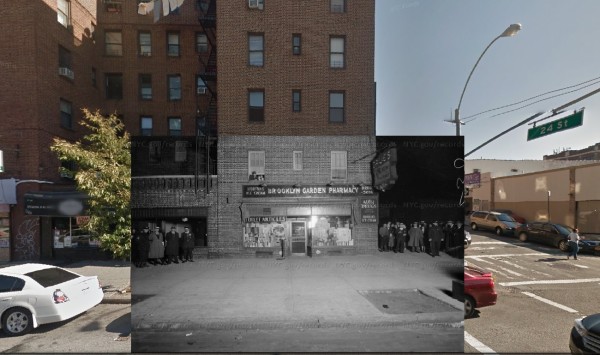
(The New York Police Department has several thousand photographs of crime scenes available online at the City’s Department of Records. Many of them are gruesome. But they are great pictures for doing research. The picture in this blog post was taken after a holdup at 729 4th Avenue in 1931. Although the pictures usually have limited or poor information associated with the photos, after a bit of some rudimentary research, we can usually find the whole story in old newspaper archives. Finding these, we are able to piece together the story behind the photograph.) THE STOOL PIGEON & THE BODYGUARD The picture above (the black & white inset photograph) is the scene of a holdup, which took place at 729 4th Avenue, Brooklyn, on 16 May 1931. Two men were shot during the event, but before it took place, another – providential – event occurred, which stymied the holdup and caused the arrests of the three men. Chile Acuna, whose revelations pried off the lid of police vice squad conditions (read about it here) was arriving home at 740 4th Avenue around 11:30 p.m. on 16 May 1931. His wife and their two kids were with them. So was their bodyguard, Patrolman William F. O’Brien. THE HOLDUP Noticing the vehicle at the curb of the drugstore across the street, O’Brien observed what happened next. He saw three men exit the vehicle while the fourth remained at the wheel. As the three men approached the drugstore, O’Brien told Acuna: “Run upstairs […]
THE “GOODFELLAS” OF CUMBERLAND STREET
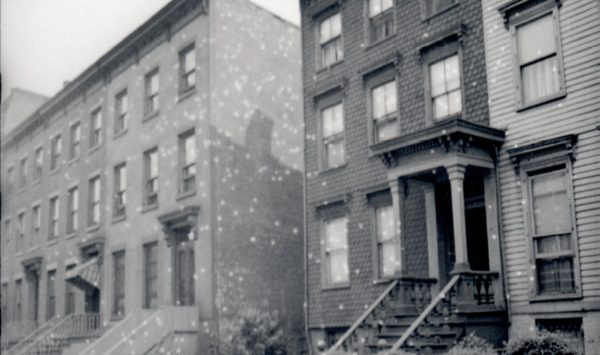
One of the Brownstone Detectives’ first House History Books, No. 231 Cumberland Street: The Story of a House, tells the story of an 1852 antebellum frame home just steps from Fort Greene Park. It’s an action-packed tome, replete with treachery, “poudrette,” “small art,” SROs, and the gangland figures from “Goodfellas.” Here is a brief timeline of the history of this single landmarked property, matched up with “spreads” from the book: THE HISTORY OF A BROOKLYN HOUSE The land beneath which No. 231 would someday rise, started out as a tobacco farm owned by the first Italian immigrant to New York, Pietre Cesare Alberti. The farmland would eventually be built upon in 1851-2, when builder John Ross constructed a row of three homes there. First owned by a woman with a tragic history, a melodrama involving treachery, another man, and an infant daughter – which became the gossip of the newspapers of the time – No. 231 was rented out throughout the the 1850s and 1860s, in addition to many returning Civil War veterans, to merchants and their small families. One of those merchants featured prominently in the founding of the Lafayette Avenue Presbytery Church. Before this, however, he had begun his interesting career as a Night Soil Man – starting a company which, amongst other “agricultural” endeavors, collected human excrement from the backyard privvies of Brooklyn, selling this “compost” to Long Island farmers as the appropriately – if euphemistically – named “poudrette.” The property was then owned by an immigrant, […]
THE BROOKLYN BARBER WHO BURGLED (1904)
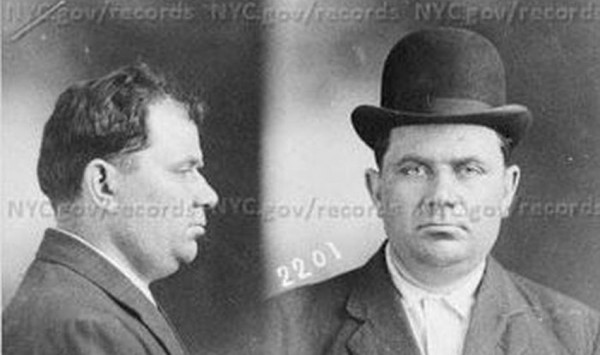
******************************************************************************************************************************** Brownstone Detectives investigates the history of our clients’ homes. The story you are about to read was composed from research conducted in the course of one of those investigations. ******************************************************************************************************************************** Abe Miller was fond of burglary. You might say that it was in his bones. He could not resist it any more than a child could resist candied apples at the fair. He burgled countless Brooklyn and Manhattan homes – more, certainly, than he was ever tried and convicted for – crossing the North River, at times, to burgle still more in New Jersey. Miller, aka Abram Miller, aka Abram Skudden, aka Abe Skudin, &c., &c., &c…was a burglar, though, of little note. As his life of crime ran from the early 20th century through 1940, he had been caught, convicted, and sentenced many times over. But he never reformed. GETTING MARRIED, ARRESTED, & DRAFTED Researching people who are long dead is like putting together the pieces of a puzzle that you find between the cushions of a couch – the pieces are a little dusty, some are broken, and usually they are not all there. In the end, if you do not have the puzzle’s box top, you are left to guess at what the whole picture looks like. This was the case with “Abe Miller.” THE PART ABOUT GETTING “MARRIED” & “DRAFTED” Miller first shows up in government records in 1904 when he married Lena Silverman 14 August on Manhattan. Both were from Russia, the two remaining […]